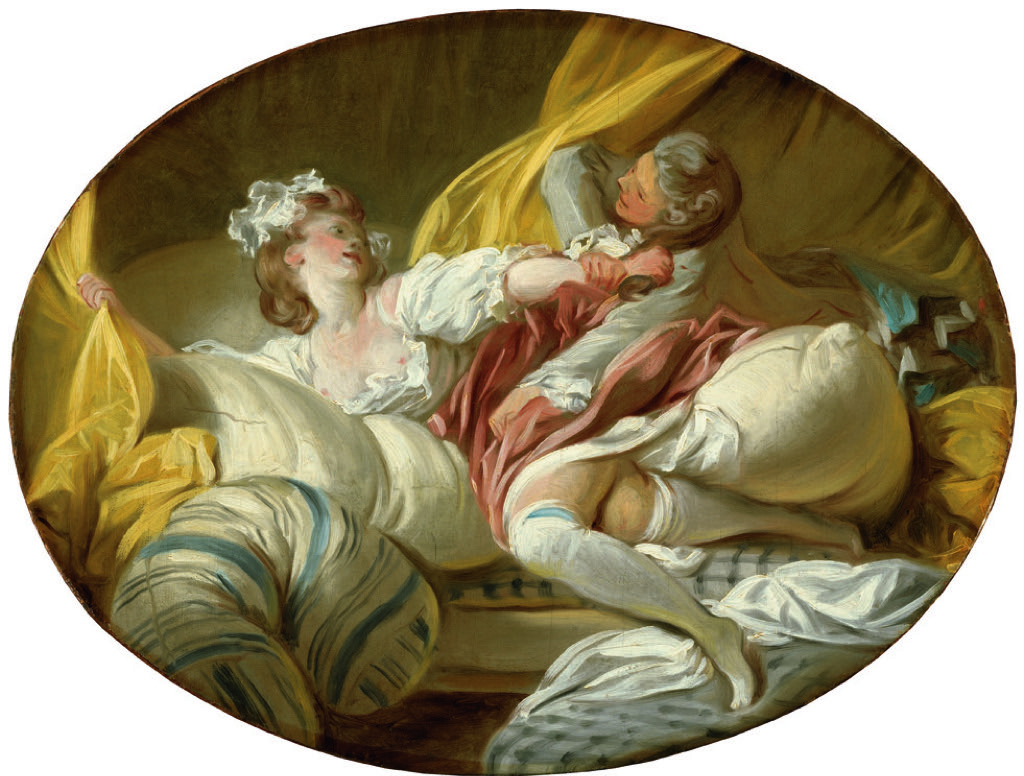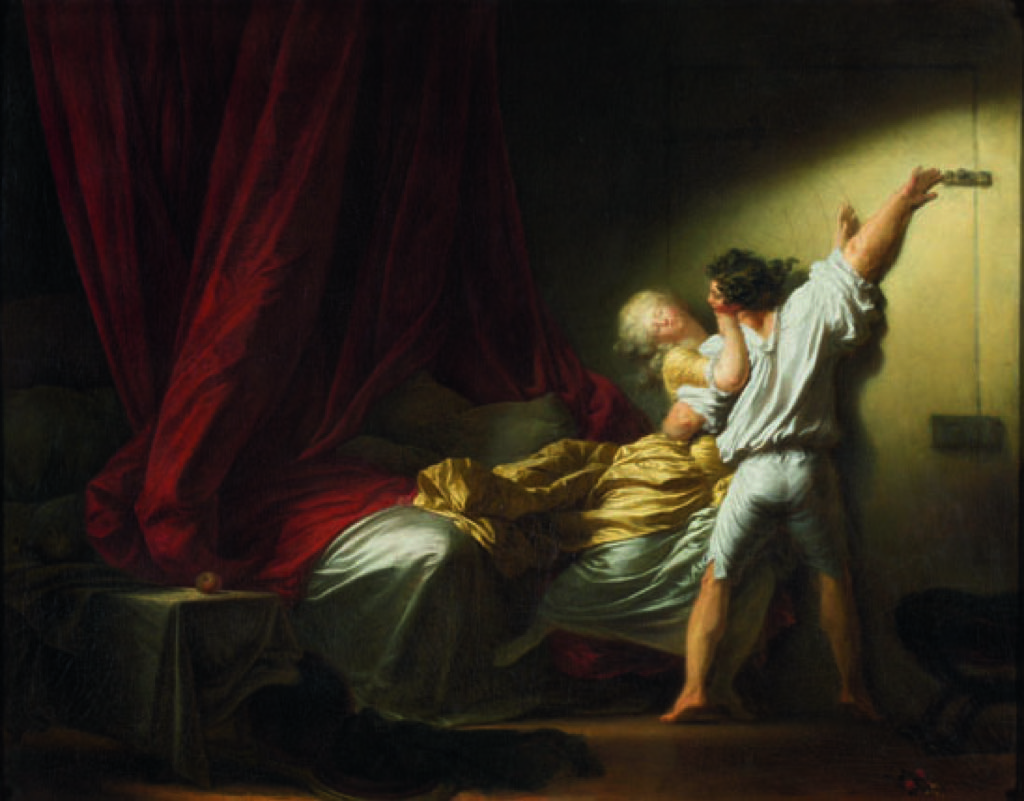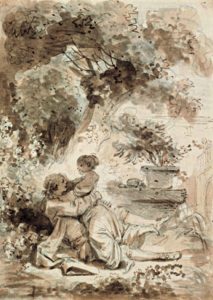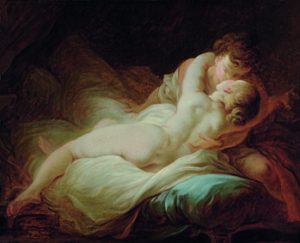The title of this exhibition of paintings by Jean-Honoré Fragonard, “Fragonard in Love, suitor and libertine”, is very strange… The curator, Guillaume Faroult, takes great care in telling us that « Frago » was married (at 37) and faithful to his lovely painter wife Marie-Anne Gérard all his life, so why call him a libertine? But the scenes of « La Résistance inutile », « La chemise enlevée », « l’Instant désiré » are very exciting and never have I seen creased sheets so well painted…
The new show at Musée du Luxembourg, one of the most efficient small exhibition spaces in Paris, will be very successful. Many paintings have come from abroad like « La lettre d’amour » from the Metropolitatn museum, the portrait of a young lady with a bouquet of flowers, a little dog and pink cheeks. A most refreshing vision of youthful love ! His mentors, painter François Boucher, erotic writer Crébillon and Pierre Antoine Baudoin « a master in libertinage », must have influenced him greatly. In the first rooms, a beautiful brown lavis (brush) « Les Pétards » came from MFA in Boston and « Scène de dortoir » from the Harvard Art Museum : they are both totally enchanting. As are his illustrations of La Fontaine tales « La servante justifiée » or « La laitière et le Pot au lait ». The famous paintings from the Louvre, « Les Baigneuses », « Le Verrou » (on which you can read Guillaume Faroult’s little book), and the formerly Diderot portrait, now called « Portrait de Louis-François Prault ” are all there as is the fabulous « Deux femmes jouant avec deux chiens » from Lynda and Stewart Resnick’s collection.
Yet I was a bit disappointed by the show, the mauve and light purple rooms with no focus point nor sensuality. I would have loved little cabinets lined in soft velvet with precious draperies. And why not music from the time (Glück or Grétry) which would have accompanied the characters in the paintings into their sensuous moments. Fragonard fled Paris after the Revolution for all his clients had been guillotined and he painted houses in Grasse. He died in 1806, during the Empire, unfashionable and poor.
It is a kick to discover some of these works, which came literally from all over France and America (including “La jeune fille aux petits chiens” from Jeff Koons’s collection) yet I was never moved nor excited. But you have until January 24 th to prove me wrong.
Share this Post



